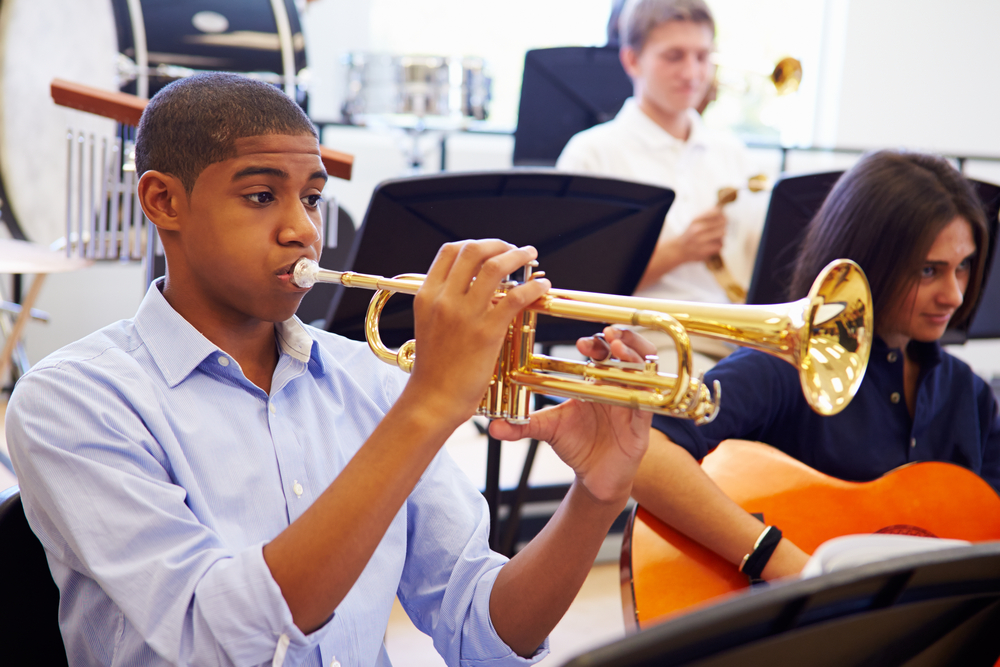
The optimal time to begin orthodontic treatment for most children is between the ages of nine and 14. Unfortunately for many kids, this is also the ideal time for learning to play a musical instrument. While having braces can be an exciting milestone for many, braces can also cause some complications to your child’s routine.
A period of adjustment is expected when it comes to playing music with braces depending on the instrument your child plays. Brass instruments require the most changes because of how a musician presses their lips directly into a metal mouthpiece, while woodwind instruments are less of an adjustment.
Here are some expert tips for helping your child through the adjustment period that comes with new braces and playing a musical instrument.
Playing the Flute With Braces
Flute players wearing braces will need to make slight adjustments when continuing to play their instruments. The mouthpiece of a flute requires a musician to press their lower lip against a piece of metal to blow air into the instrument. Flute players who previously used extra pressure on their lower lip before braces will need to adjust their playing technique to avoid lower lip discomfort.
Pro Tip: A Flute’s head joint may need to be cleaned more frequently to combat excess condensation for those who wear braces while playing the instrument. Encourage great habits by cleaning the flute before and after playing.
Playing the Clarinet With Braces
The challenges of playing woodwind instruments with braces differ from those of playing brass instruments with braces. Woodwind players will not have to press their mouths against a metal mouthpiece; however, they will still have to make some slight adjustments after first getting braces.
The clarinet mouthpiece requires a musician to use their lower lip to cover the bottom teeth to make a sound. Your child may also experience excess condensation that can cause a gurgling sound inside the instrument, so drawing the condensation out of their reed and mouthpiece more often is suggested.
Pro Tip: If your child is struggling to produce the same sound quality they had before braces, it may be helpful to switch to a softer reed.
Playing the Trumpet With Braces
Wearing braces affects trumpet players more than any other instrument. This is due to the size of the trumpet mouthpiece and the way the sound is produced. Musicians must press their lips into a small metal mouthpiece and buzz their lips to create the sound. The inside of your child’s lips and cheeks may become sore from being pressed into the mouthpiece, especially for those who use a lot of pressure to play their trumpet.
Pro Tip: Adjusting to braces as a trumpet player takes time, practice, and continued patience. Consider the purchase of a thin mouth guard to cover braces for the first few weeks after having braces put on to ease any discomfort.
Playing the Trombone With Braces
Like a trumpet, a trombone produces sound when a musician buzzes their lips together into the metal mouthpiece. That being said, the mouthpiece of a trombone tends to be larger than a trumpet’s, which puts less pressure on a child’s braces. Your child may experience discomfort when first playing with new braces.
Pro Tip: It can be challenging for musicians with braces to produce high notes on the trombone because it requires more pressure into the mouthpiece. Orthodontic wax can be used to cover brackets to prevent irritation while playing an instrument.
Thomas Orthodontics Is Here To Help
At Thomas Orthodontics, our priority is our patients’ comfort while helping them achieve a beautiful, straight smile. We’re always here to help patients or parents with any concerns or questions they may have throughout their orthodontic treatment plan. For more information or to schedule a consultation appointment, contact us today.





